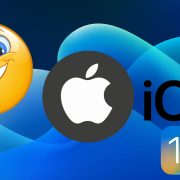Many people seem to believe that blockchain and distributed ledger technology are the same things. Find out what is the difference between blockchain and distributed ledger technology (DLT) right now.
Are blockchain technology and distributed ledger technology closely related? No. This is a widespread misconception held by a large number of people. This article defines blockchain and discusses its distinctions and similarities to distributed ledger technology.
We live in a digital era dominated by soundbites and buzzwords. A time when even the most complex technical solutions can be summarized in five words or less. As a result, we’re seeing an increase in devious businesses attempting to profit from the so-called crypto boom. Some are even rebranding with the term ‘blockchain’ in their title.
As expected, attracting investment through the use of buzzwords such as blockchain technology will raise only short-term gains. Ironically, such actions are directly responsible for the technology’s branding issues. As a result, this is one of the reasons why most people are unsure about blockchain. Meanwhile, emerging trends indicate that distributed ledger technology can deliver tangible benefits and results without the hype.
Along with the rise of Bitcoin and other cryptocurrencies, blockchain has been making headlines almost daily. Distributed ledgers, on the other hand, have not received the same level of attention. When the terms “distributed ledger technology” and “blockchain” are used in the same sentence, they frequently raise more questions than they answer. This is all before Bitcoin is introduced to further muddy the waters.
Now is the time to delve deeper and discover the truth behind the buzzwords. Although these terms have become synonymous in recent years, it is critical to distinguish the two.
Read: What are Decentralized Applications & Why You Need Them
What Is A Distributed Ledger System (DLS)?
Despite the fact that this technology is referred to by confusing acronyms such as DLT in financial and Fintech circles, the good news is that it is relatively simple to understand. A distributed ledger is a database that spans multiple locations or participants. By contrast, the majority of businesses currently rely on a centralized database that is physically located in a single location.
A centralized database, on the other hand, is essentially a single point of failure. A distributed ledger, on the other hand, is decentralized, removing the need for a central authority or intermediary to process, validate, or authenticate transactions. Businesses rely on distributed ledger technology to process, validate, and authenticate transactions and other types of data exchanges. Typically, these records are only stored in the ledger after all parties have reached an agreement.
The distributed ledger’s files are then timestamped and each is assigned a unique cryptographic signature. Each participant in the distributed ledger has access to all of the relevant records. The technology maintains a verifiable and auditable history of all data stored on a given dataset.
What Is Blockchain Technology?
A blockchain is essentially a decentralized database that contains entries that must be validated and encrypted. Consider it as a highly secure and verified Office 365 document. Each document entry is predicated on a logical relationship with all preceding entries.
The term “blockchain” refers to the “blocks” of transaction records that are added to the chain. To accomplish this, the technology makes use of cryptographic signatures known as hashes.
What Is The Difference Between Blockchain And Distributed Ledger Technology?
The critical distinction to keep in mind is that blockchain is only one type of distributed ledger. While a blockchain is a collection of blocks, distributed ledgers do not require one. Additionally, distributed ledgers do not require proof of work and theoretically offer more scalability options.
Eliminating the intermediary party is what makes distributed ledger technology so appealing. Unlike blockchain, a distributed ledger does not require a block-based data structure. A distributed ledger is nothing more than a database that is distributed across multiple locations, regions, or participants.
On the surface, distributed ledger appears to be the same as a blockchain. All blockchains, on the other hand, are distributed ledgers, but not all distributed ledgers are blockchains. While a blockchain is a subset of distributed ledgers, it is also a type of distributed ledger.
The Benefits Of Blockchain And Distributed Ledger Technology
A distributed ledger empowers users with control over all of its data and transactions and fosters transparency. They can reduce transaction times to minutes and are processed 24 hours a day, seven days a week, saving billions of businesses. Additionally, the technology enables increased back-office efficiency and automation.
Distributed ledger technology, such as blockchain, is extremely advantageous for financial transactions. They eliminate inefficiencies in operations (which ultimately saves money). Additionally, increased security is provided by their decentralized nature and the immutability of the ledgers.
Alternatively, blockchain technology enables the creation of a tamper-proof log of sensitive activity in a secure and efficient manner. This can range from international financial transactions to shareholder records.
Financial processes are significantly upgraded to provide businesses with a secure, digital alternative to clearinghouse-managed processes. By and large, avoiding these frequently bureaucratic, time-consuming, paper-intensive, and costly processes.
When you add data to a blockchain, it becomes permanently etched into the network. When a series of transactions occur over time, an accurate and immutable audit trail is created. This is extremely advantageous for financial audits.
Having data stored in a location where no single entity owns or controls it, and where no one can alter what has already been written, provides benefits similar to those associated with double-entry bookkeeping. This ultimately results in a reduction in the likelihood of errors or fraud.
Wrapping Up
In brief, a blockchain is a type of distributed ledger. It is intended to record transactions or digital interactions in order to provide businesses with much-needed transparency, efficiency, and security. However, these two technologies are not interchangeable; blockchain is only the tip of the iceberg.
-

1 MIDI Myths Busted and All You need to Know about the converter
-

2 Top 14 Challenges during Mobile App Development 
-

3 A Step-By-Step Guide To Mobile App Development
-

4 7 iOS Features That You Probably Did Not Know About
-

5 Best Pro Chromebook Tools in 2022
-

6 Let’s Build Blockchain-Based Decentralized Autonomous Organizations
-

7 6 Sci-fi Video Games
-

8 Router Tips to Have Undisturbed Wi-Fi During Work From Home
-

9 In-House vs Outsourced IT Support
-

10 How to Repair a Corrupt Access Database File?

